IN the spirit of our 50 years of Merdeka, we rightly celebrate with pride our nation's achievements and contributions of the past half century.
However, there still exists an isolated world in the Sungai Buloh leprosy settlement where a group of aged leprosy patients lives with "clawed" hands and feet.
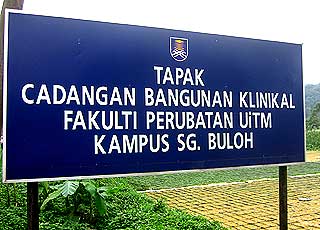 Sadly, they had appealed to the government to protect their settlement from being destroyed in the name of development. This place is their only home for almost 80 years, longer than our years of independence even. Besides providing refuge, the settlement has allowed them to live independently and help them regain self-respect.
Sadly, they had appealed to the government to protect their settlement from being destroyed in the name of development. This place is their only home for almost 80 years, longer than our years of independence even. Besides providing refuge, the settlement has allowed them to live independently and help them regain self-respect.
In more recent years, this unique community has also established one of the most remarkable horticulture industries in the Klang Valley. But how many people who visit the place show concern to the leprosy patients, their history and their future? More often than not, people are only attracted to the cheaper and fresher greens produced by this community - their hard labour is taken for granted.
Needless to say, not many are keen on knowing the 77-year history of this successful settlement due to the outdated social stigma of leprosy.
Surprisingly, the Sungai Buloh leprosy settlement has marked a very significant stage in Malaysian history in relation to medicine, planning, architecture and social cultural aspects.
The rediscovery of this historical place is one of the most exciting milestones in our modern heritage and preservation. It is like a modern 'ancient site' that awaits people to uncover and interpret on how an isolated world had been planned, structured and functioned to self-sustain a group of humans, being socially, culturally and economically separated from society.
1 The legacy of Garden City planning
The very first idea of providing a self-supporting settlement for leprosy patients was accepted by the Federal Malay State (FMS) Government in1923 at the 5th Biennial Congress of Tropical Medicine held in Singapore, thanks to Dr EAO Traverse. This concept of a self-supporting community can be directly related to the idealistic Garden City principles introduced by Ebenezer Howard in England in 1898.
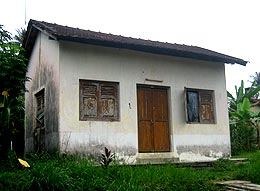 In Malaya, the idea was introduced by Charles Crompton Reade, a town planning advisor to the FMS Government in the 1920s but it was rejected by private land owners and later, by some high ranking officers in the FMS Government in 1927. With very limited opportunity, Reade only managed to implement some of the Garden City planning principles in government quarters and his final town planning legacy in Kuala Kubu Baru which was planned in 1926-27.
In Malaya, the idea was introduced by Charles Crompton Reade, a town planning advisor to the FMS Government in the 1920s but it was rejected by private land owners and later, by some high ranking officers in the FMS Government in 1927. With very limited opportunity, Reade only managed to implement some of the Garden City planning principles in government quarters and his final town planning legacy in Kuala Kubu Baru which was planned in 1926-27.
Between 1924-25, the Garden City idea was inconspicuously used in Sungai Buloh to plan a leprosy settlement. It was not only conceptually perfect in terms of clear zoning among housing areas, central park, surrounding green belt, etc, but it also functioned with practicality to self-support a contained community. Today, the original green belt of the earliest self-sustained planning architecture is fully explored as one of the most important horticulture areas in the Klang Valley.
2 Pioneer of self-supporting prophylaxis settlement
In January 1926, Dr Souza Araujo, an internationally well-known Brazillian leprologist came to Malaya. He was amazed by the policy of Sungai Buloh leprosy settlement, in which every single detail responded aptly to the needs, including suitable choice of site for agriculture purpose, erection of main administration building with hospital and treatment facilities, etc. His idea of such a settlement was one which blended with the cultural background of the country, ie kampong .
Later that year, Souza became the director of the Brazil National Leprosy Service who fully supported reforms and development of leprosarium in Brazil. Among the Leprosariums of the world, Sungai Buloh leprosy settlement was one of the pioneer works that demonstrated how an isolated world (prophylaxis) could be constructed to segregate affected human beings, yet bringing them together in a civilized society.
 It involved genius efforts in organising social policy, combining the art of town planning and medical sciences; its successful outcome is an outstanding solution to humanity.
It involved genius efforts in organising social policy, combining the art of town planning and medical sciences; its successful outcome is an outstanding solution to humanity.
3 Legacy of multi-racial living environment
Harry Miller, in the Straits Times Annual Report (1940), explained that the Sungai Buloh leprosy settlement was probably the only place of its kind in the world and the result of remarkable efforts from the government.
It was a small republic with a population of over 2,000 from different races - Chinese, Malays, Indians, Javanese, Thais, Eurasians and a sprinkling of other nationalities. Together they formed a big 'family of men, women and children, with different languages, religions and customs isolated by law, but bound by the common fetter of leprosy, yet living in complete harmony'.
The Sungai Buloh leprosy settlement is probably the earliest "modern settlement" that represents the fundamental idea of what multi-racial living is all about.
4 Exceptional example of modern sub-culture
The self-supporting environment of the Sungai Buloh leprosy settlement has created a unique culture of social and economic characteristic that can be construed as a rare and exceptional example of modern sub-culture in the 20th century.
It was governed by medical superintendents who registered births, marriages, divorces and deaths. The whole settlement was managed by the patients themselves based on an inmate workers system, in which every patient had a social responsibility such as teacher, nurse, police force member, farmer, etc.
5 Renowned famous leprosy research center
Since its establishment, the settlement's research unit has put Sungai Buloh on the world map as an outstanding leprosy research center.
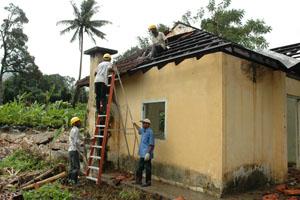 All research developments and achievements of the Sungai Buloh research unit have been recorded in the book
Leprosy in Malaysia, Past, Present and Future
by Anthony Joshua-Raghavar, 1983.
All research developments and achievements of the Sungai Buloh research unit have been recorded in the book
Leprosy in Malaysia, Past, Present and Future
by Anthony Joshua-Raghavar, 1983.
6 Rare example of a group of colonial buildings
The architecture of Sungai Buloh Leprosy Settlement illustrates a rare example of 'a group of domestic-scale colonial buildings in one contained settlement' which consists of detached houses, prison, post office, market, administration building, wards, mosque, churches, social clubs, school, clothes factory, etc - all with simple features and utilitarian function so apt to the sociological and economical circumstances of its settlers.
Besides that, its buildings portray a creative adaptation of colonial architecture into tropical architecture - with deep overhangs, jacked pitch roof, louvers, full-height window panels - adding a touch of climate- and user-sensitive design (leprosy patients have sensitive thermal requirements) to its humble appearance.
Future development
Referring to the six significant values of the Sungai Buloh seprosy settlement as described above, it meets all criteria of the National Heritage Act 2005, Part X, Section 67(2), Items (a)-(i) which entitles it to be preserved under the National Heritage Act 2005.
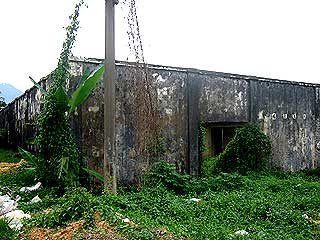 Moreover, it is one of the important properties categorized by ICOMOS (International Council on Monuments and Sites). ICOMOS urged state parties to start recognising and listing their cultural heritage especially "under-represented properties" in the World Heritage List and Tentative List as a contribution to the development of the Global Strategy for a credible, representative and balanced World Heritage List.
Moreover, it is one of the important properties categorized by ICOMOS (International Council on Monuments and Sites). ICOMOS urged state parties to start recognising and listing their cultural heritage especially "under-represented properties" in the World Heritage List and Tentative List as a contribution to the development of the Global Strategy for a credible, representative and balanced World Heritage List.
This lovely historical settlement, nestled in the scenic valley of Bukit Lagong which is part of the Forest Research Institute Malaysia (FRIM) forest reserve, has unlimited attractions to offer - unique culture, beautiful natural setting, horticulture industry and natural assets with the potential of becoming a traveller's Mecca. Fortunately, most of the original structures are still intact except for some buildings which have naturally ruined because of age.
It is hoped that the government will conduct studies to preserve this 219-acre land to its rightful condition. Keeping it intact will give added pride to national achievements.
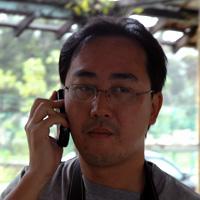 Just as in constructing mega projects for the progress of the nation, preserving the Sungai Buloh Leprosy settlement can be a very meaningful mega conservation project that all Malaysians can take pride in.
Just as in constructing mega projects for the progress of the nation, preserving the Sungai Buloh Leprosy settlement can be a very meaningful mega conservation project that all Malaysians can take pride in.
Afterall, the place is a tangible model of multi-racial living with common values and fundamental ideas of what Malaysian society is all about.
LIM YONG LONG ( right ) is Executive Researcher, Center for Modern Architecture Studies in Southeast Asia. Comments can reach rentakini by emailing [email protected]

